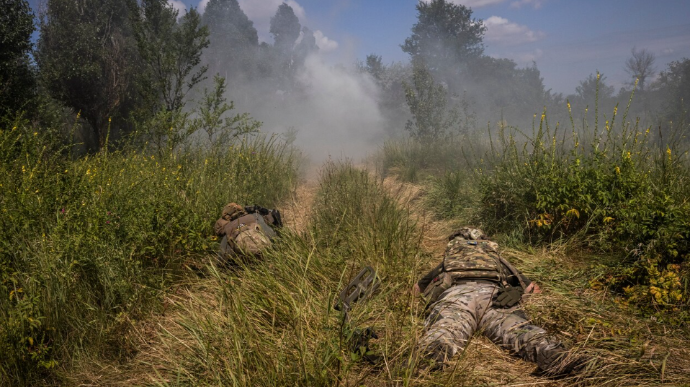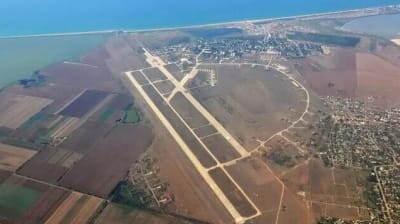Minefields are biggest obstacle to Ukrainian counter-offensive

Ukraine's counter-offensive is progressing slowly, as the areas in front of Russian defensive fortifications are densely mined. On the eve of the counter-offensive, Ukraine received less than 15% of the bomb disposal and engineering equipment it had requested from its Western partners.
Source: The Washington Post
Quote: "The long buildup to the counteroffensive, which began about a month ago across multiple segments of the battlefield in the country’s east and south, gave the Russians time to prepare, soldiers said. Areas between 3 and 10 miles deep in front of the Russians’ main strongholds have been densely mined with antitank and antipersonnel mines and trip wires. These defenses have been successful in stalling the Ukrainian advance, they said.
As a result, Kyiv’s forces have changed strategy, Ukrainian military personnel said. Rather than try to break through with the infantry fighting vehicles and battle tanks that Western allies provided to aid Ukraine in this counteroffensive, units are moving forward, slowly, on foot."
Details: The WP goes on, saying that Ukraine's struggle in the minefields has exposed the vulnerability of armoured vehicles and tanks, especially the newly arrived American-made Bradley fighting vehicles and German-made Leopard battle tanks, which officials considered the key for Ukraine to retake Russian-occupied territory.
"The vehicles have won praise from soldiers — even after they’ve hit mines, most people inside survive with just minor injuries — but they have not been able to breach Russia’s defences alone," WP added.
Valerii Zaluzhnyi, the Commander-in-Chief of the Ukrainian Armed Forces, has said that Ukraine needs special remote demining equipment. In an interview with WP, he said that Ukraine uses US-supplied M58 Mine Clearing Line Charge (MICLIC) systems, but "they are also being destroyed" and therefore "we need a lot of them".
A senior Ukrainian official who spoke to WP on condition of anonymity has said that Kyiv received less than 15% of the amount of demining and engineering equipment, including MICLICs, it had requested from its Western partners before the counter-offensive. Some of this equipment arrived only last week, as the official said.
Ukraine's Defence Minister Oleksii Reznikov and Zaluzhnyi told WP that they have informed their Western counterparts that they urgently need more demining systems, such as Bangalore torpedo explosive charges.
"Minefields are one of the problems that certainly affects the pace of the offensive. This is a problem we see. Could it have been resolved more quickly? It could have been. How could it be solved? At least General Milley knows. The other question is, can he help with that? I don’t know," Zaluzhnyi said.
US officials have told WP that they provided Ukraine with almost all of the equipment it had requested prior to the counteroffensive. The officials have noted that it is not always possible to provide the quantity requested by Ukraine, but said that, particularly with regard to MICLIC systems, Washington is working to provide more soon, not only of the system itself but also of the charges it uses to detonate long rows of mines.
The officials have also revealed to WP that the US decision to provide Ukraine with the controversial cluster munitions would give Kyiv a firepower advantage, allowing the Ukrainian military enough time and space to use its existing engineering equipment.
Ukrainian soldiers involved in the counter-offensive have shared with WP that, as there are very few demining systems, they have become easy targets for Russian troops, who are prioritising them.
WP has noted that the depth and density of minefields is a significant problem along the southern front line in Zaporizhzhia Oblast, where Russians expected Ukrainians to attack and try to cut the land corridor through the occupied region that connects the Russian border with Crimea.
"The area’s terrain is largely sprawling, open fields with few places for the Ukrainians to camouflage their larger equipment and vehicles. And the Russians chose the high ground for their positions, soldiers said," WP said.
Oskar, an engineer unit commander of the 47th Mechanised Brigade, has said to WP that his group received a German-made Wisent demining tank, which it used before launching a counter-offensive in Zaporizhzhia Oblast. This tank and similar Soviet-produced models successfully cleared some of the paths for the brigade's first offensive.
"But now their use is already ineffective, because the enemy expects the appearance of such equipment, which is massive, which is noisy, which is easy to see and, accordingly, to strike," Oskar said.
Another officer of the 47th Brigade has stated that on the first day of the counter-offensive, some units of the brigade mistakenly chose the wrong route on Bradley combat vehicles and Leopard battle tanks, entering a minefield instead of the route prepared by the engineers.
The WP wrote there were demining vehicles ahead of the convoy, but the group was forced to stop when the vehicles behind suddenly hit mines and became trapped. The chaos created a cluster of vehicles in one place. The Russians then began to attack the Ukrainians with helicopters and anti-tank missiles, seriously damaging and destroying several armoured vehicles and tanks. According to a Ukrainian officer, some units that had abandoned their equipment still managed to capture Russian trench positions.
"When the enemy sees even a Leopard tank in front of him and special engineering equipment, he will destroy the special equipment first. Because without it, all the others will not pass. And in just a couple of days of the offensive, several such vehicles were destroyed along with their crews," the officer said.
As the Russians are using drones to search for demining systems to hit them with artillery and missiles, the Ukrainians are trying to manually clear them.
"Sapper units — sometimes a group of just four people — will often wait for twilight to clear paths, as they are too visible in the daylight and can be seen through night-vision devices in the dark," WP stated.
The bomb disposal experts have told WP that walking around with a metal detector is unrealistic because they are too visible, so they crawl around looking for mines.
"It slows us down a lot, because the work of a sapper, it needs time and tranquility. It’s not possible to do our work in these circumstances," said Lieutenant Colonel Mykola Moroz, the commander of the 128th Mountain Assault Brigade’s engineering and sapper battalion.
In addition, WP has noted that the Russians are dropping bombs from drones on areas cleared by Ukrainian bomb disposal experts, and the positions reached by Ukrainians may be mined already.
Since Ukrainian soldiers are moving on foot rather than using new Western equipment, it has become more difficult to replenish ammunition and evacuate the wounded.
"We were preparing, but the Russians were also preparing. They understand that engineering equipment right now is solving a key problem and is a game changer, so they want to destroy all of that first. I sent another letter to all of our partners to focus on this right now," Ukraine’s Defence Minister Oleksii Reznikov said.
Journalists fight on their own frontline. Support Ukrainska Pravda or become our patron!





